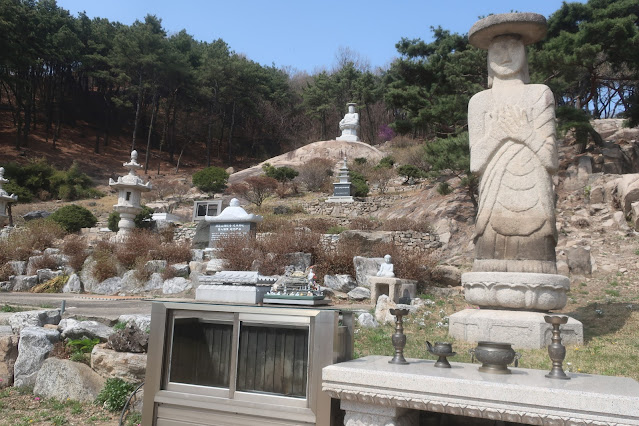I’ll be leading an excursion next Saturday, April 16 for the Royal Asiatic Society to the Gungsan area, where we will visit Yangcheon Confucian Shrine, Gyeomjae Jeong Seon Museum, and the Gungsan Tunnel History Exhibition Hall. We will then visit Gaehwasan (near Gimpo Airport), a low mountain covered with temples, tombs, a Korean War memorial, and spring flowers; it also overlooks Haengju fortress, site of Imjin War and Korean War battles.
For more information about the tour, see here (though I'll note that the mountain part of the walk will be only about a 2 km-hike now).
This past weekend I headed over to the area to make sure everything was open and accessible and took a few photos:
Yangcheon Hyanggyo, or Confucian shrine and school, first built in 1410 and the only remaining part of the government complex that was here when Yangcheon was its own prefecture during the Joseon era.
Painting of part of the Yangcheon magistrate's complex by painter Jeong Seon, who served as magistrate from 1740-45 and has a museum dedicated to him, Gyeomjae Jeong Seon Museum, nearby.
Mitasa Temple, with its large Buddha statue dating from the late Goryeo period.
I lived next to Gaehwasan for 11 years but this was only the second time I'd seen a chipmunk there, pointed out to me by a man who was throwing rice grains in its direction (and then getting annoyed when a bulbul landed and started gobbling them up).
I suspected this was a Eurasian Jay (어치), though I wasn't sure until I was able to zoom in on this photo at home. I'd seen them near my house in central Seoul, but it was the first time I'd heard one, and they make the oddest sound.
Yaksasa, which likely dates back to the late Goryeo or early Joseon era, judging by its pagoda and a statue.
More azaleas.











No comments:
Post a Comment